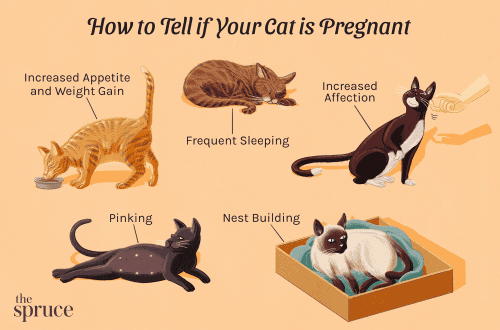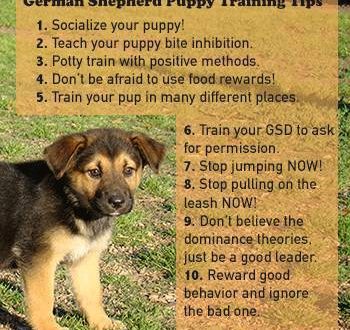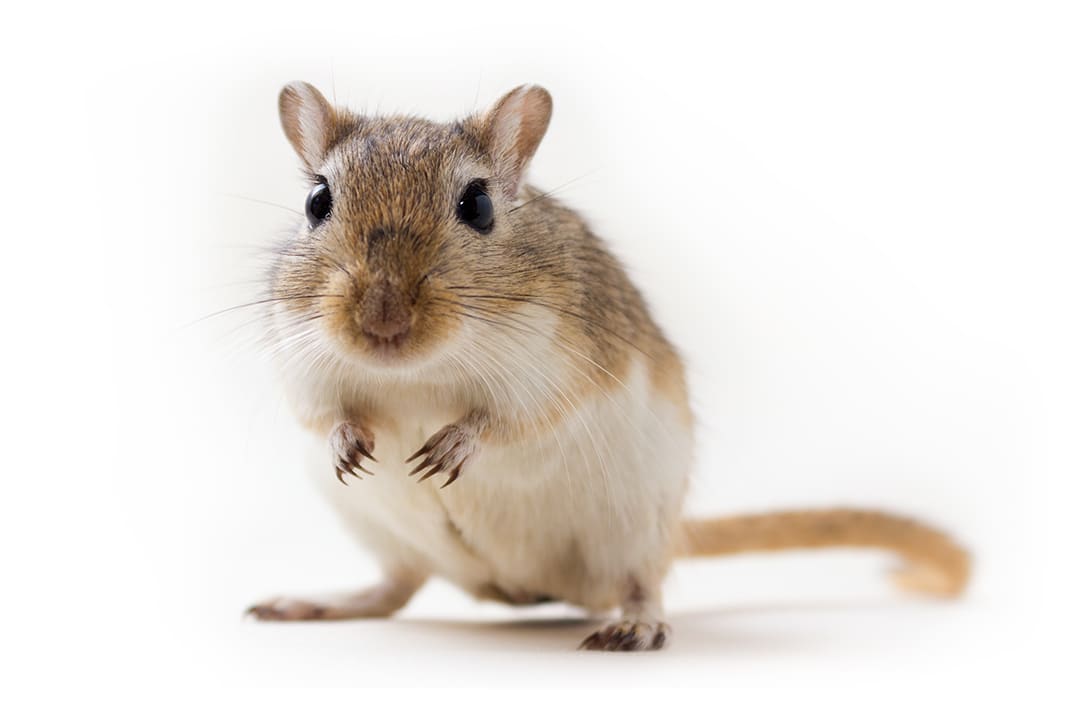
Gerbil maintenance and care at home: what to feed, how long it lives, how to tame it
Probably all the children of the world dream of having a pet. But after the appearance of one child asks for a second animal, and so on ad infinitum. Only the intransigence of parents limits the number of animals in the house. After all, the main concerns will fall on their shoulders. That is why adults often prefer cute gerbils.
These unpretentious rodents are practically odorless and feel great at home. So that the pet does not get bored, it is better to take a couple of mice at once. If breeding is not planned – by all means, of the same sex. What kind of animal is the gerbil? Maintenance and care, games and feeding – is it a joy or a hated routine?
Contents
History of domestication of the gerbil
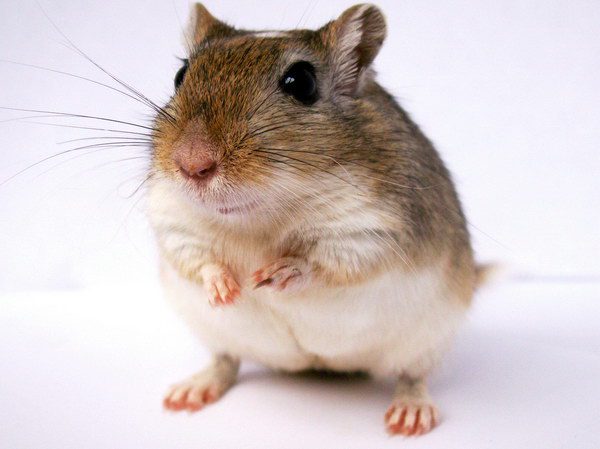
For almost 50 years, gerbils have lived hand in hand with humans.
The first attempts to tame gerbils took place in the 30s of the last century. It quickly became clear that these rodents adapt well in captivity. Their color at that time was the same – the sandy color made it possible to hide from enemies.
Almost 30 years later, the second wave of mouse domestication began. Unpretentiousness, lack of odors and an interesting character attracted lovers of domestic rodents. In 1969, the first international exhibition of gerbils was held, where mammals of exclusively natural color were presented.. Immediately after the demonstration, experts began to study the genes responsible for coat color. Empirically, it turned out to bring out gray, bright red, white, black and even spotted individuals.
Such a variety of colors has made gerbils very popular animals. They began to write about them in specialized magazines, as a new kind of pets. After a short period of time, already in May 1969, the “National Club of Gerbil Lovers” was organized. This date is considered the beginning of the life of such wonderful and unpretentious animals next to people.
Breeds and their descriptions
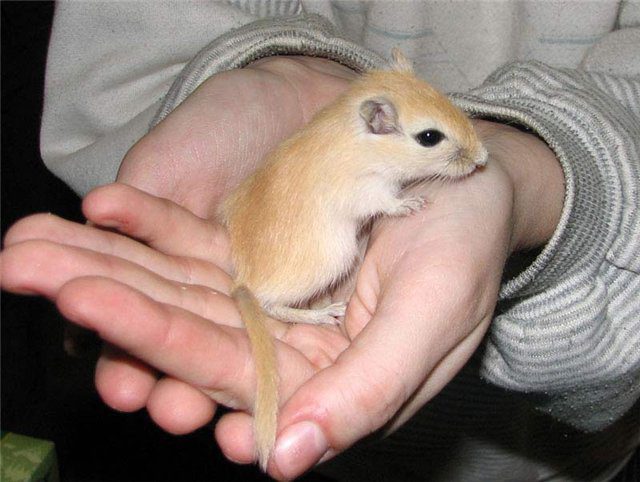
Gerbils got their name from their original coloring.
The natural habitat of gerbils is deserts and steppes.. That is why their original colors were sandy or brown – this is how they merged with nature and hid from predators.
Their body size ranges from 6 to 22 cm, depending on the species. The tail has a length of 7 to 20 cm, and weight – from 10 to 200 g. A distinctive feature from other mice is the tail, completely covered with fur with a small tassel at the end. Today, about 100 breeds of amazing animals have been identified. Only a few of them were domesticated.
The Balochistan gerbil is the smallest representative. Its length is about 6 cm, and its weight rarely exceeds 25 g. The coat color is gray-yellow, the belly is white. In nature, it can be found in the southern parts of Asia.
The dwarf short-tailed has a similar color, is slightly longer than its predecessor and lives in North Africa.
Cheesman’s gerbil, up to 11 cm in size, with a tail exceeding the length of the calf, has an orange back. A distinctive feature is the large eyes that stand out brightly on a small head.
The Persian mouse is much larger than its relatives: weight – up to 170 g, body length – up to 19 cm. The brown back and tassel at the tip of the tail make it especially attractive. It lives in Central Asia, feels good in the mountains at an altitude of over 3 meters above sea level.
The largest individual is called the Great Gerbil. Its length can exceed 20 cm. The coat has a yellow-sand color, the tail ends with a black tassel at the end.
short-eared gerbil
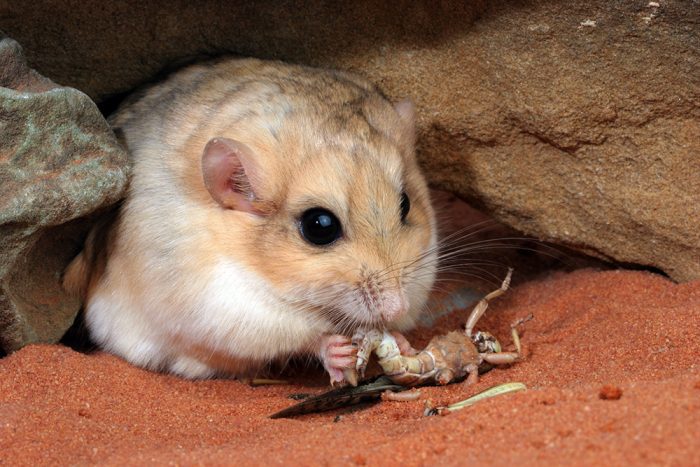
The ears on the head of the short-eared gerbil are really hard to distinguish.
The short-eared gerbil or Desmodillus auricularis is distinguished by small ears, tightly pressed to the body. The color is red or red-brown, the abdomen, paws and places behind the ears are covered with white wool.
The body length does not exceed 12 cm, weight – 70 g. The tail is shorter than the calf – 8-10 cm. Places of natural residence – South Africa.
Mongolian gerbil
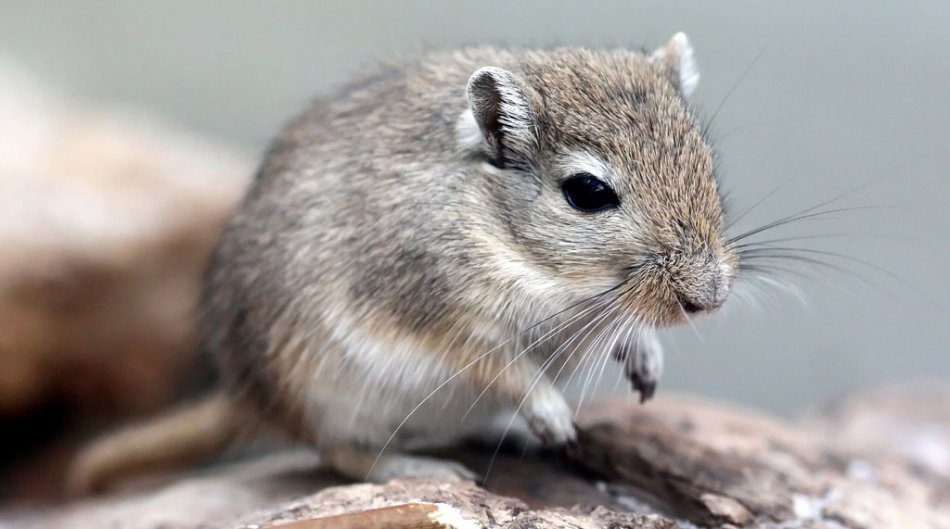
The Mongolian gerbil is the most common breed.
The most popular for home keeping are Mongolian or clawed gerbils.. The scientific name of the individual is Meriones unguiculatus.
Refers to large species: dimensions – about 20 cm, weight – up to 120 g. At the end of the long tail is a pretty tassel. Male Mongolian mice are larger than females.
In nature, they are found in the steppes of Mongolia and adjacent areas. The genes of these particular species of mammals were subject to the first studies with the subsequent withdrawal of various colors. Natural color is sand. The hairline has a heterogeneous color along the entire length – red near the calf and black at the ends.
Furry-tailed gerbil
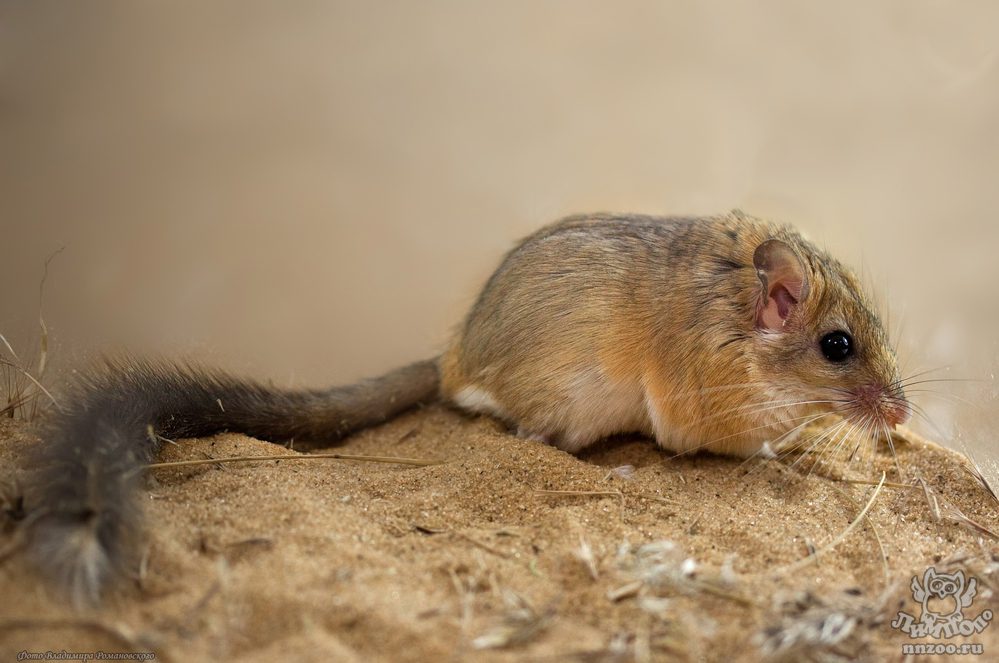
Furry-tailed gerbils have longer tail hairs than body hairs.
Sekeetamys calurus has a sand color. The tail is completely covered with thick hair, often with a white tassel at the end. The hairs on the tail are longer than on the whole body. Hence the name of the animal – fluffy-tailed gerbil.
The size of a mammal is from 10 to 13 cm. It is found in nature in the steppes and deserts of North Africa and Western Asia.
Pros and cons of a gerbil as a pet
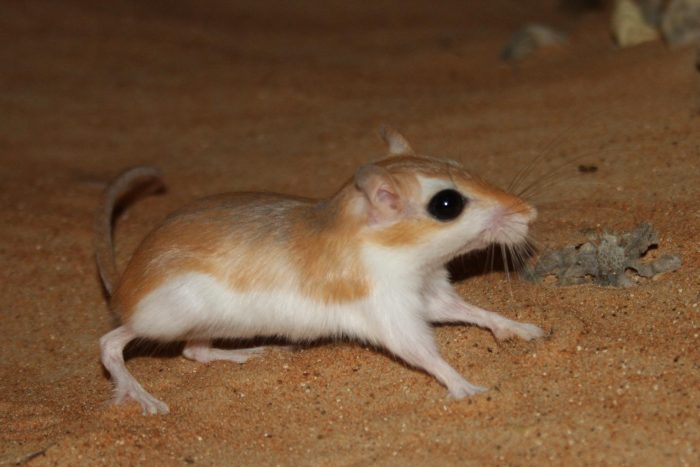
Gerbils are clean and playful, but you will not wait for the silence of the night from them.
Consider the main advantages of keeping gerbils at home:
- Clean – in comparison with other rodents, gerbils require the least care, it is enough to clean the cage once a week;
- There is almost no smell;
- Unpretentious in food;
- If you take a couple – there is no need to constantly entertain the animal, you can leave it unattended, the animals will not die of boredom;
- Good for hand taming.
Like any animal, along with the advantages, there are a number of disadvantages:
- The active life of gerbils occurs mainly at night. So, during your sleep, the animal will make a lot of noise – dig and dig. Do not keep pets in the bedroom at night.
- Gerbils are rodents, and that says it all. They are constantly chewing on everything they see. There is no need to talk about any wooden houses. It should be a cage with certainly metal rods, durable swings and feeders.
- The life span is about 2-3 years. During this period, the owner will have time to get used to the pet – parting is often difficult.
Care and maintenance
Before bringing a new resident into the house, you should learn about the basic conditions for keeping gerbils. The better you prepare in advance, the less trouble the rodent will cause in the future.
Do not place the cage with the animal in direct sunlight or in a draft. Despite the fact that the gerbil is native to sunny areas, it is necessary for the animal to be able to hide in the shade.
What to feed
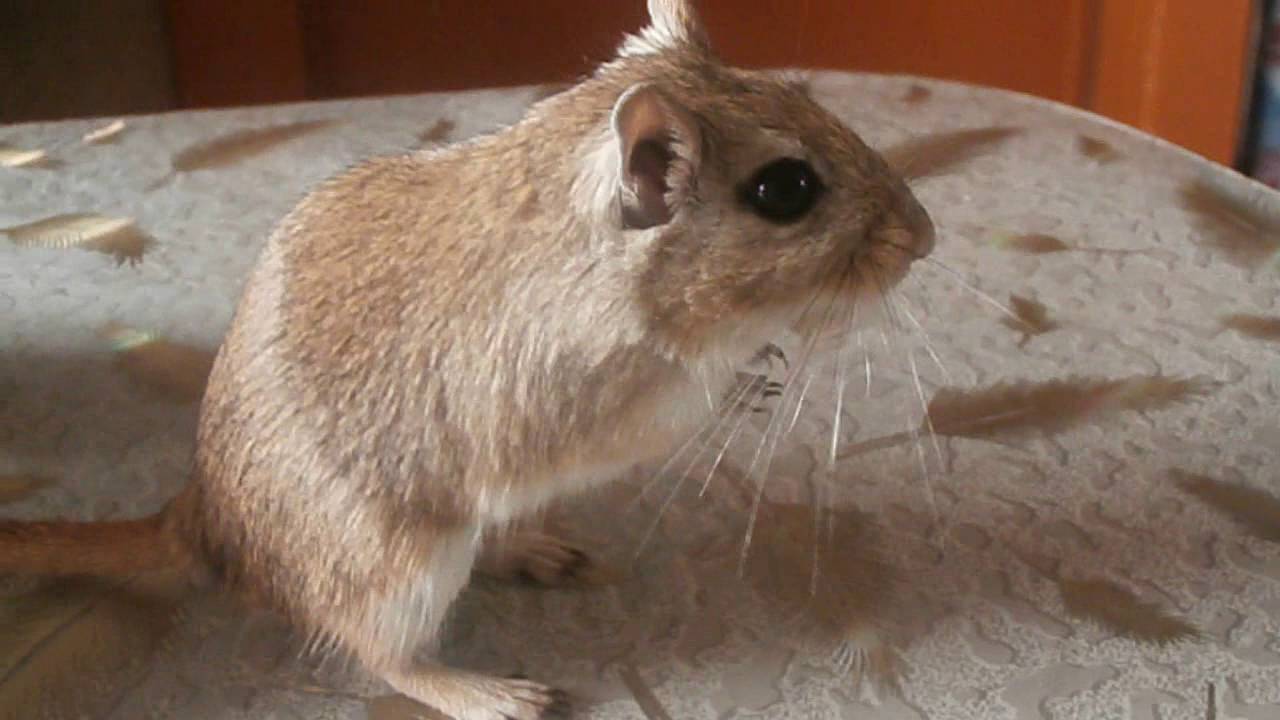
The gerbil menu should always include seeds, nuts and dried vegetables and fruits.
Under natural conditions, gerbils live in deserts or steppes. Accordingly, the food should be similar to that which can be obtained in nature.
The gerbil’s main diet consists of various herbs and seeds.. Rodents get water from plants, but just in case, a drinking bowl should be placed in the cage.
You can buy specialized food for gerbils at pet stores. In its absence, kits for hamsters are suitable. However, it is recommended to remove sunflower seeds and peanuts – gerbils should not eat a lot of fat. You can also choose your own diet: a mixture of barley and oats will become the basis. Adding a variety of fresh or dried vegetables and fruits (except citrus fruits) diversifies your pet’s meals.
Some individuals are happy to eat dry cat food – it also has all the necessary trace elements for the life and development of the animal.
Each rodent will independently choose the ideal type of food. Give him that opportunity. The only thing is that fatty and oily foods should be limited. Gerbils are very fond of them, but an overabundance can adversely affect the health of the pet.
At the moments of feeding, the animal is accustomed to a person. Offer him different types of food from your hands, and he will understand that the owner is not an enemy to him.
Video: Feeding gerbils
Hygiene and bathing
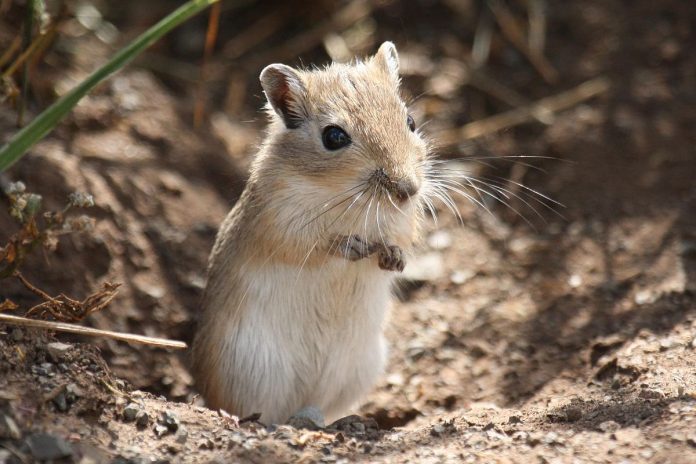

Sand bath – the main hygiene procedure for gerbils
Gerbils are practically odorless – this factor is often decisive when choosing a pet. Water for desert animals is strictly prohibited. And yet, they need periodic cleaning – bathing. Surprisingly, sand is the best place for hygiene procedures. Take a deep container larger than the size of a mammal, fill it with clean sand and place the animal there. Nature will take its toll – he will quickly figure out what he needs to do.
Do not forget that the gerbil is a rodent. If the container is plastic, there is a risk that he will start to gnaw on it, so you can swim only under supervision or you need to find a more durable material.
Features of behavior
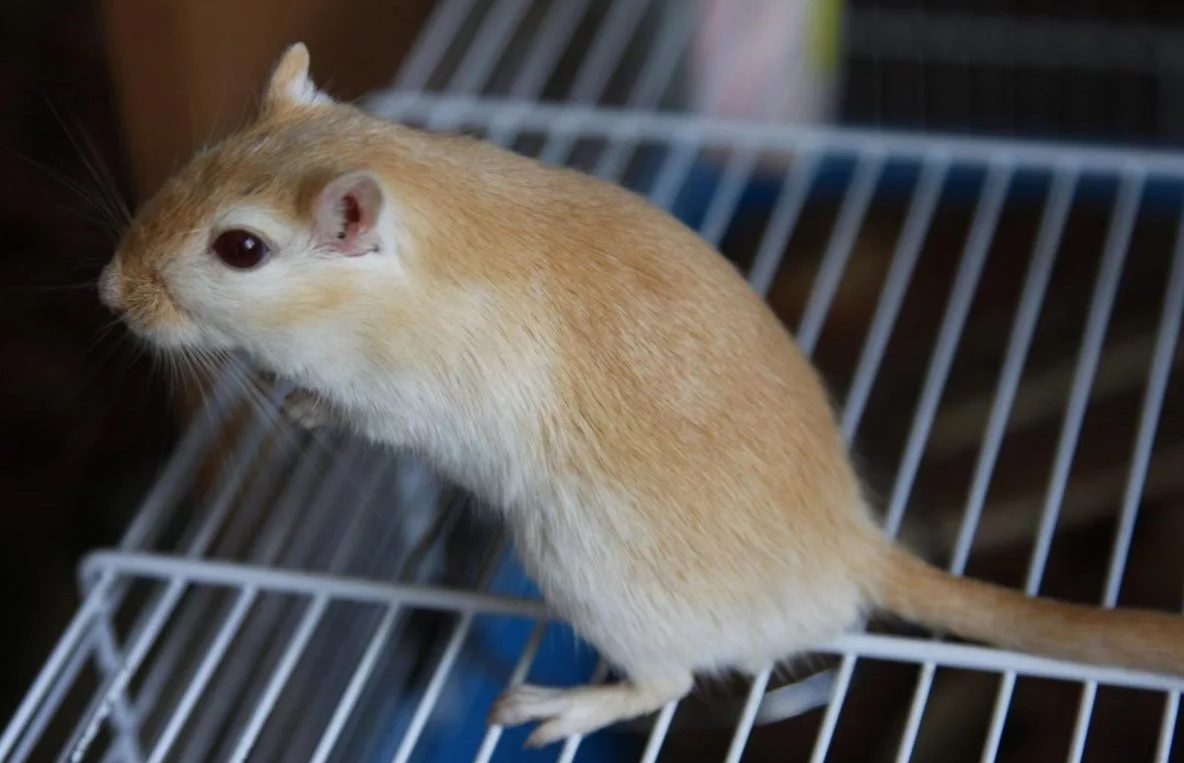

If you decide to get a gerbil, be sure to learn its sign language
By the behavior of the pet, you can understand what state he is in – playful, sleepy, sickly or frightened.
Frequent rustling of the hind legs, similar to a drum roll, indicates that the animal is frightened and warns its relatives about the danger. Even when there are no other gerbils around, this behavior is natural.
Stronger and louder, intermittent paws indicate that the animal is ready to mate and is waiting for a partner.
Periodically, gerbils make sounds, most often this means that they are afraid of something or call other mice. If the pet begins to squeak often in a dream, you should show it to the doctor. This can be both a feature of the animal and a sign of health problems.
Taking the animal in your arms, pay attention to its paws. If they are clenched into fists, then he is uncomfortable. It is better to put the gerbil in place. When an animal trusts you, its paws are relaxed and its toes are straightened..
Video: Gerbil knocking paws
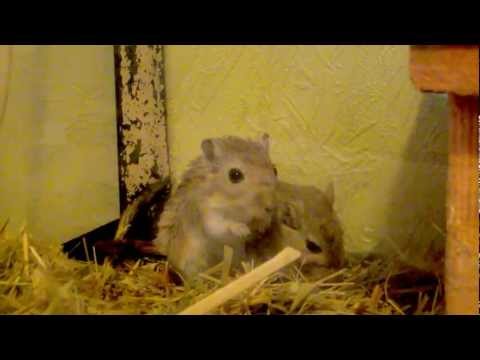

Watch this video on YouTube
Diseases and treatment
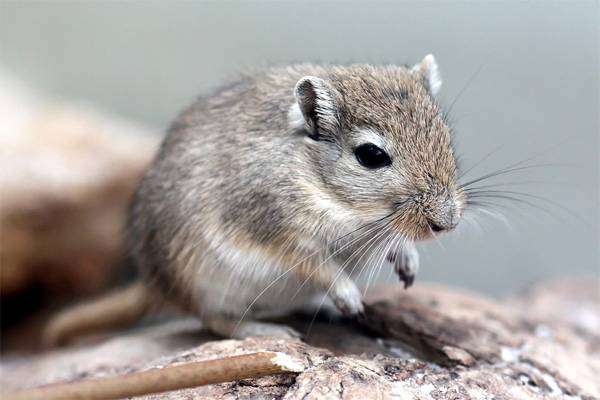

Take your gerbil to the vet at the first sign of illness.
The causes of gerbil ailments are varied. You should not delay the trip to the veterinarian – many diseases occur very quickly, and the animal dies.
The first thing to do when the baby is lethargic is to place him in a warm, quiet and shaded place.. Be sure to provide the mouse with fresh water.
Swollen, purulent eyes and red discharge from them are often signs of conjunctivitis. It is necessary to exclude dust, it is better to temporarily cover the cage with clean napkins. Dried echinacea can be added to the food. Rinse your eyes with chamomile tincture. Veterinarians often prescribe antibiotic drops.
Bloody discharge from the nose can mean allergies and, as a result, itching. You should change the food and bedding. If the condition has not changed within a day, show the doctor.
Sometimes the animals begin to gnaw their tail – this is a sign of a fungal infection. You can’t do without the help of a specialist.
Vaccination
Vaccination is not required for gerbils that are kept exclusively in the home and do not intersect with street rats. There is experience in grafting an animal, but it has not been studied enough, there are no special preparations for small rodents.
Choice of cage and accessories
In a cage, a gerbil must have a container for digging.
The gerbil cage and the accessories inside it should be made of durable materials that the gerbil cannot chew through.
These animals are very fond of digging, so they need to be given this opportunity.. To do this, the tray is filled with hay, dry grass or a special flooring purchased at a pet store. Accordingly, the lower closed part of the cage should be deep. Be sure to provide access to water and feed. The house and toys will add entertainment to the baby.
Breeding
If you decide to expand a colony of domestic gerbils, then you only need to ensure cleanliness and provisions – the parents will do the rest.
Breeding gerbils is an easy task. But you should not do this if the owners for future cubs are not found in advance..
It is also recommended not to mate animals that have diseases or defects.
How to determine gender
Sexually mature males have well-developed testes, which can be seen between the hind legs of the rodent. If necessary, you can slightly press on the stomach – the difference between the female and the male will become more noticeable.
In the female, the anal and genital openings are very close, a couple of millimeters apart.
Mating
The first birth of a mouse must occur before reaching one year of age.. For mating, a couple should be placed in a separate cage. Sunflower seeds can be added to the female’s food – a small amount of oils and fats will not hurt her during this period.
Gerbils reach sexual maturity at 10 weeks of age. After 20 months of life, you should not reduce them.
How long does pregnancy last in gerbils
Gerbil gestation lasts 24 to 28 days. Older individuals bear longer. There are cases when a nursing mother becomes pregnant again – in this case, the waiting time for offspring can increase up to 40 days. Before giving birth, the female begins to equip the nest and becomes more calm.
How to care for newborns
Baby gerbils are born naked. By the fourth day, the eyes and ears open. On the ninth day, the babies become active and overgrown with fur. 2 weeks after birth, you can determine the sex of the animal. In the early days, there is no need to disturb parents – mom and dad of newborns are happy to swarm around the kids. It is important to maintain cleanliness and provide pets with food and clean water.
Training and games


Gerbils are very playful rodents.
Gerbils are very curious animals. It is on this feature that it is worth building communication with a new pet and training it.
Before you begin to master joint games with the animal, you should accustom it to your hands. To do this, offer the rodent a variety of snacks. Sooner or later he will come closer and stop being afraid. Do not make sudden movements – this can frighten the animal.
Gerbils enjoy playing with humans. They love to run around hands, climb into sleeves and make their way through a kind of tunnel. With frequent communication, mice get used to the owner and independently climb onto his shoulder, from where they watch everything that happens with pleasure. During the games, you can periodically feed a friend.
In no case do not scare or scold a mammal, in response to this it may bite or stop approaching a person.
How long do gerbils live at home
On average, gerbils live up to 2-3 years.. Rare individuals at home live up to 4 years of age. The last year of a mouse’s life is different – chronic diseases appear, the animal becomes less mobile.
How to name a pet
The gerbil doesn’t care what you call it – it still won’t respond
The name of the animal can be absolutely anything. Gerbils do not respond to the call of a person, so the main thing is that it is convenient for the owner to call the animal during communication and joint games.. Often the nickname is chosen based on the appearance of the animal, its color or size. Behavioral features also affect the choice of name. You can name your pet after your favorite fairy tale character, there are also human names.
Gerbils are an ideal option for choosing a friend. They do not smell, are not demanding in maintenance and care, are not picky about food and are very curious. The only serious drawback is its life span, which rarely exceeds 3 years.





